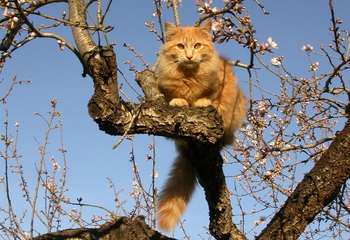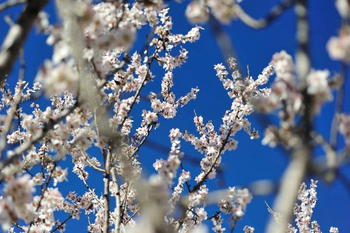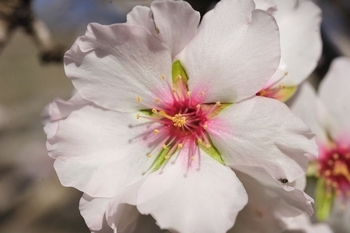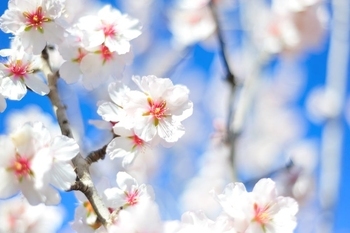- Region
- Águilas
- Alhama de Murcia
- Jumilla
- Lorca
- Los Alcázares
- Mazarrón
- San Javier
-
ALL AREAS & TOWNS
- AREAS
- SOUTH WEST
- MAR MENOR
- MURCIA CITY & CENTRAL
- NORTH & NORTH WEST
- TOWNS
- Abanilla
- Abarán
- Aguilas
- Alamillo
- Alcantarilla
- Aledo
- Alhama de Murcia
- Archena
- Balsicas
- Blanca
- Bolnuevo
- Bullas
- Cañadas del Romero
- Cabo de Palos
- Calasparra
- Camping Bolnuevo
- Campo De Ricote
- Camposol
- Canada De La Lena
- Caravaca de la Cruz
- Cartagena
- Cehegin
- Ceuti
- Cieza
- Condado de Alhama
- Corvera
- Costa Cálida
- Cuevas De Almanzora
- Cuevas de Reyllo
- El Carmoli
- El Mojon
- El Molino (Puerto Lumbreras)
- El Pareton / Cantareros
- El Raso
- El Valle Golf Resort
- Fortuna
- Fuente Alamo
- Hacienda del Alamo Golf Resort
- Hacienda Riquelme Golf Resort
- Isla Plana
- Islas Menores & Mar de Cristal
- Jumilla
- La Azohia
- La Charca
- La Manga Club
- La Manga del Mar Menor
- La Pinilla
- La Puebla
- La Torre
- La Torre Golf Resort
- La Unión
- Las Palas
- Las Ramblas
- Las Ramblas Golf
- Las Torres de Cotillas
- Leiva
- Librilla
- Lo Pagan
- Lo Santiago
- Lorca
- Lorquí
- Los Alcázares
- Los Balcones
- Los Belones
- Los Canovas
- Los Nietos
- Los Perez (Tallante)
- Los Urrutias
- Los Ventorrillos
- Mar De Cristal
- Mar Menor
- Mar Menor Golf Resort
- Mazarrón
- Mazarrón Country Club
- Molina de Segura
- Moratalla
- Mula
- Murcia City
- Murcia Property
- Pareton
- Peraleja Golf Resort
- Perin
- Pilar de la Horadada
- Pinar de Campoverde
- Pinoso
- Playa Honda
- Playa Honda / Playa Paraíso
- Pliego
- Portmán
- Pozo Estrecho
- Puerto de Mazarrón
- Puerto Lumbreras
- Puntas De Calnegre
- Region of Murcia
- Ricote
- Roda
- Roldan
- Roldan and Lo Ferro
- San Javier
- San Pedro del Pinatar
- Santiago de la Ribera
- Sierra Espuña
- Sucina
- Tallante
- Terrazas de la Torre Golf Resort
- Torre Pacheco
- Totana
- What's On Weekly Bulletin
- Yecla


- EDITIONS:
 Spanish News Today
Spanish News Today
 Alicante Today
Alicante Today
 Andalucia Today
Andalucia Today
Almonds General Information and Care
 Very Rare sight the Lesser spotted almond Cat
Very Rare sight the Lesser spotted almond Cat
Almonds Care,Harvesting, Co-operatives & general lnfo
· Introduction to almonds
· Co-operatives
· General care calendar
· Suppliers for chemicals, netting, maintenance services
· Articles written for Newspapers – General info.
Introduction to Almonds.
Almonds really are the most giving of trees.
In the spring the air around our own finca smells of sweet honey and the show of candy pink petals evokes deep gratitude at our good fortune to be here in the Spanish spring.
The wood heats our home in the winter, the prunings are chipped to make a useful mulch, the dried leaves and husks provide free food for our livestock, whilst the nuts feed us and provide welcome income , help to lower cholesterol levels and provide invaluable vitamins.
 Most owners of country properties will find themselves in possession of some number of almonds, as they were heavily planted in this area from the 1950’s, when a series of grants became available to farmers to stimulate agricultural investment. Almonds are still a viable crop on flat land, with no possibility of irrigation, where it is possible to plant intensively and harvest using modern machinery, but for many finca owners they represent labour intensive, time consuming , hand work , which for many makes them unviable.
Most owners of country properties will find themselves in possession of some number of almonds, as they were heavily planted in this area from the 1950’s, when a series of grants became available to farmers to stimulate agricultural investment. Almonds are still a viable crop on flat land, with no possibility of irrigation, where it is possible to plant intensively and harvest using modern machinery, but for many finca owners they represent labour intensive, time consuming , hand work , which for many makes them unviable.
The grants that are available ensure that many families still maintain their trees, but the younger population taking over the farmlands recognise the value of building land and have little interest in continuing with the cultivation of almonds.
Efforts by groups such as the Global Nature Foundation are encouraging the continuation of traditional farming methods and many fincas are switching to ecological almond cultivation as awareness grows of the precarious nature of the bee population in agricultural areas.
Co-Operatives.
Fuente Alamo area.
Almendras Murcianas
Carreterra de Corvera km1
30320
Fuente Alamo
Tel 968 59 82 00
Fax 968 59 87 36
More details of co-operatives to be added soon.
 Is it worth joining a Co-Operative?
Is it worth joining a Co-Operative?
It depends on how much land you own, whether it is currently under almond cultivation and whether you wish to continue cultivating the land.
Realistically, it is not worth trying to join a co-operative with less than 10,000 metres under cultivation, as the charges made by the co-op to be a member wipe out the value of the benefits received.
The co-op is able to apply for grants on behalf of their members, and if you go to the most local it is highly likely that the previous owners received a grant, so the land will probably be known by the co-operative. There have even been reported cases of wily ex-owners still claiming grants for land that they no longer own.(!!!)
The main provisor of the co-operative is that the land still be under cultivation, although most will not insist that you actually sell them your almonds. Ploughing annually is essential to tree maintenance, so you need to be willing to ensure that this happens to receive the grant.
Ecological grants are higher, although methods of pest control are more laborious.
There are other benefits to members, namely cheaper diesel than it is possible to buy at the pumps and reduced price chemicals, nets and tools.( More info in newspaper articles below.)
General care Calendar.
Jan-Feb.
Ploughing around trees to limit weeds. Traditional farmers use a mattock to ensure there are no weeds around the base of the trees.
Many feed at this point by putting wood ash, a tiny amount of manure or chemical feeds. The most commonly used product is 15-15-15, which is scattered lightly before the ground is ploughed.
Feb-March.
After flowering, baby almonds start to form and leaves burst into life. The trees are at their most susceptible from attack by aphids, and it is not uncommon to see trees glowing line green from the sheer numbers that can flourish given the right conditions. Spraying is widespread, although great care should be taken to wear protective goggles and a mask as the chemicals can damage the eyes and cause severe reactions in some people. Ecological alternatives are becoming increasingly available from co-operatives and agricultural suppliers.
 July
July
If there has been heavy rain after ploughing in the spring, a second ploughing may be needed. Clear weeds from near to trees as it makes net laying difficult if there are a lot of weeds.
Check nets are undamaged.
August
Harvest time. See newspaper articles below for more information.
September – December
Pruning and branch clearance. Full pruning instructions, together with photographs will appear in the September issue of Calida Life Gardening Magazine and will be posted on this section.
Suppliers of chemicals, netting and maintenance services.
The co-operatives listed above offer a good range of products for tree care. Members will normally be able to buy at reduced rates.
Agroquimicos Fuentes S.L.
Carreterra de Aguilas Km 1
30870
Mazarron
( Up the hill from Mas Tejera, next to the Suzuki garage.)
Tel 968 590 357
Fax 968 333 048
agrofuentes@agrofuentes.com
Good selection of all agricultural products, including fungicides, pesticides, tools, and garden products.
Offer special discounts to Gardening Members. Full details to follow soon.
Newspaper articles archive.
Harvesting the almonds – written in July
Outer cases have started to open, slowly lightening in colour, a sure sign that the almonds are nearly ready to harvest.
Within a couple of weeks almond shakers and trailers of black netting will be seen all over the campo as farmers start to bring them in.
 Almonds have two cases, a soft green outer case which splits open when the nut is ready to harvest and a hard inner protective shell which cradles the precious kernel itself. The outer green case has to be removed before the inner shell is laid out to dry in the sun, and although traditionally this was carried out by hand in the long summer evenings, nowadays is done by automatic huskers. Large cultivations are fortunate enough to be able to use an automatic shaking machine which vibrates the tree causing the almonds to fall, then husks them automatically, smaller family units often share a mechanical husker and the less fortunate have to sit there and do the job by hand.
Almonds have two cases, a soft green outer case which splits open when the nut is ready to harvest and a hard inner protective shell which cradles the precious kernel itself. The outer green case has to be removed before the inner shell is laid out to dry in the sun, and although traditionally this was carried out by hand in the long summer evenings, nowadays is done by automatic huskers. Large cultivations are fortunate enough to be able to use an automatic shaking machine which vibrates the tree causing the almonds to fall, then husks them automatically, smaller family units often share a mechanical husker and the less fortunate have to sit there and do the job by hand.
The first year we shelled them nut by nut and could barely bring ourselves to eat the wretched things as we were sick of the sight of them, so in year 2 purchased a small husking machine, and have never looked back. It doesn’t do a perfect job, unripe almonds will be ejected by the machine looking mangled and battered but still with an outer case on and many cases still end up mixed in with the almonds, but it saves a huge amount of time. Husked nuts are laid out to dry in the sun for several days before being bagged up for sale, and we dry the outer cases to feed the sheep and goats throughout the autumn. Husks are also marvellous for the fire, and are sold commercially for this purpose ,although we just make newspaper packets and chuck them on the fire in parcel sized lumps.
Co-operatives will buy the almonds complete with husks but they must be taken to the co-operative immediately as once bagged up for transportation the heat causes them to begin decomposition , the hard inner shell absorbs moisture and the kernels are ruined.. They can be left for a couple of days before husking by hand, but not in the sun, or heaped up as the same thing will happen. If you have to husk by hand it is advisable to only pick what can be husked the same day.
Unfortunately for most of us smallholders, the time to harvest almonds is bang slap in the middle of August when the heat makes it impossible to work in the daytime.
We begin to prepare the fields in July, running the plough around to clear the messy weeds out of the way, as they catch the nets when we begin to harvest and slow the work up considerably. Doing this now saves a lot of time when the harvest begins as we can move nets from tree to tree, one person at each end , leaving the crop in the net until we have done several trees, speeding us up considerably. We use one net each side, overlapping across the middle and lift the net up around the base of the tree. Mind you, no matter how hard we try they still bounce off the net and go rolling away down the field.
Bashing almond trees with a big stick is physically hard work, although a great stress relief, so is sensibly undertaken early morning or in the evening and can be made into an enjoyable social occasion if friends are willing to help in return for a beer and barbecue afterwards.
Once dried, the nuts can be stored for a couple of years and are used in a mind boggling array of Spanish recipes.
Do not leave almonds on the tree, knock them off even if you don’t want them, leaving them on hastens early death for the tree, but remember to pick them up, or there could be a whole forest of babies next spring, unless you’re lucky enough to have wild boar on the land, and they will hoover up the nuts for you with great enthusiasm. Please don’t waste these precious nuts, if you don’t want them, offer them to a neighbour or dry them and give to a charity to sell.
PREPARATION NOW.
Pre-plough fields.
Check nets for damage. New ones can be purchased in most agricultural suppliers, or more cheaply from the co-operatives.
Hot almond info.
Almonds are a massive source of magnesium – low levels of magnesium have been associated with nervous tension, anxiety, irritability and insomnia.
Almonds lower cholesterol levels significantly, eating just a few a day has been scientifically proven to reduce levels and considerably reduce the risk of heart disease.
Follow on article for last week in July.
Don’t worry if several trees have almond cases that remain stubbornly closed whilst the rest are fully open and ready to be cropped. Most farmers take the precautionary measure of planting several different types of almond as adverse weather conditions can easily destroy the crop; one night of frost in an early spring and a years’ income has fallen to the ground. In this area there are many Marcona growing, which open 2-3 weeks later than the rest. They are distinctively rounder and the shells are unbelievably hard ; these go straight to the co-operative as even a club hammer doesn’t make so much as a dent. It is worth considering joining a co-operative if a large piece of land is under cultivation, i.e. 10,000 sq mtrs. Even though financial aid to farmers has been slashed, there are still some grants available for almond cultivation providing the land is visibly planted and maintained, and even taking into account co-operative membership fees, grants are still worth applying for. It is actually worth joining a co-operative for the grants that are paid, even paying the membership fees, providing you have around 10,000m under cultivation. With fewer trees, sell crops without becoming a member, prices paid are lower, but there are no members fees to pay, so the crop is actually worth more.













































